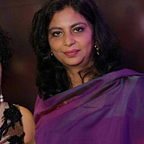How Do You Spell Fashion?
When people at a given place in a given time show more or less similar trends in the way they think, act and behave, we explain it as being the ‘fashion’ of the time.
When someone dresses to be purposely noticeable in a sea of people, adopting styles that may be a divergence from mainstream culture, we describe him or her as being ‘stylish’ or ‘fashionable’. Fashion for such people is a device for differentiation.
When people of a particular age group, gender, sexual orientation, nationality or ideological affiliations dress alike to reinforce their own stereotype, they create an identity or subculture by means of fashion. Fashion here, becomes a signifier of meaning.
Consumers who rely upon big brands to faultlessly and regularly offer them ‘fashionable choices’ supported by fashion design expertise, manufacturing expertise and a wide distribution network, feel secure in the knowledge that they are ‘on trend’. Fashion for a consumer is about being ‘trendy’.
These examples show that people construct the meanings of fashion differently. They attach different values to dress. Yet, the predominant impression of fashion is that it is the ‘business of looking good’. Despite its ambiguity, this notion has cemented itself as an idea and then for those who have come to passionately believe in this idea, it has become an ideology. When something becomes an ideology, it includes and speaks to only those who support the ideology, and excludes those who don’t. It makes ‘experts’ out of people- those people who mysteriously seem to know more about what it means to ‘look good’ than any one of us lesser mortals do. This tends to put off a lot of people. Fashion, for as much as it is loved and followed, has an equal number of people who despise it, or are simply disinterested. They see it as vain, wasteful and not worthy of the time and resources one is expected to expend on it, just to fit in. Fashion, for many, lacks substance. It seems elusive; nothing more than the fanciful notions of those who are divorced from the gritting problems of common folk.
They are not entirely wrong.
Fashion for too long, has suffered from a paucity of discourse. For something that is so intrinsic to modern life, it’s surprising that it has been positioned as something extrinsic, spectacular, cryptic and out-of-reach, without a strong, assertive counterpoint. Who in particular, can claim to be the originator of the language of fashion? Who decides what’s in and what’s out and why should anyone care for what they think? The love for fashion is certainly not of one type only. People love their clothes for a variety of reasons ranging from associations of it with memory, or for sentimental reasons; for how it envelops their form or sculpts their silhouette, or for how they rely on a particular style of dress to entrench their persona. There are other ‘very human’ reasons: for the love of wearing borrowed clothes, for the fact that a piece is cherished because it was ‘lovingly stolen’ from a sibling, for the reason that it’s easy to care for, or because it was inherited, or because it’s versatile and ‘friendly’ with all the other pieces in your wardrobe, or because it’s been part of your journey from one milestone to the next and survived…with you. Dress can also be political. Think of Gandhi and you know that dress can effectively register protest…democratically.
There are a number of ways people relate with clothes and demonstrate care for their appearance, or empower themselves through the language of fashion; and all of these are valid forms of fashion expression. Fashion need not always be spelt in the uppercase, with only one order of actions that define its meaning. Fashion can also be written and spelt in the lower case, drawing an order or sequence from a wide range of experiences relating to clothes. Disrupting this power of uppercase fashion should be at the core of fashion education. The act of disrupting allows for a more critical understanding of fashion and by extension, a more creative, authentic interpretation of it. Students should be nurtured, equipped and encouraged to question popular notions of fashion and redefine it. Inclusiveness of any sort- social, economic or cultural is merely superficial, if it does not begin by respelling that which has marked itself as the final word.
